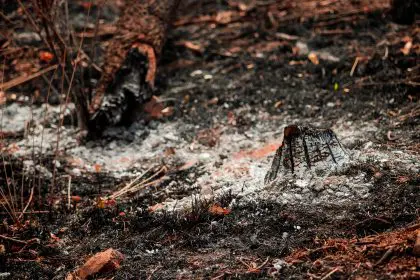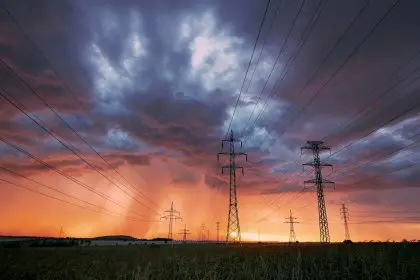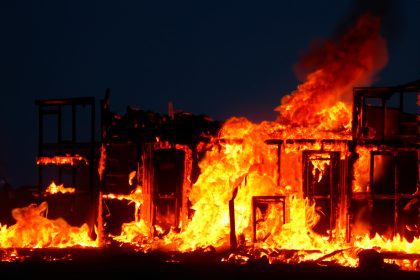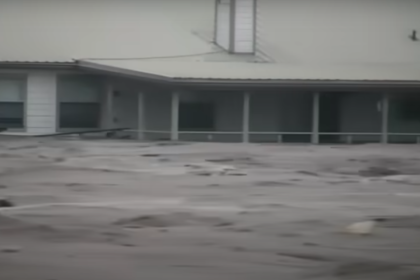Energy workers across North Carolina are holding their breath as Tropical Storm Chantal churns toward the state, bringing with it the potential for widespread chaos that has utility companies scrambling to prepare for the worst-case scenario.
While Chantal may not pack the devastating punch of previous storms like Hurricane Helene, Duke Energy officials are warning residents that this storm carries its own unique set of dangers that could leave thousands without power for days. The combination of saturated ground conditions and unpredictable wind patterns has emergency crews on high alert across the region.
The utility giant is mobilizing crews across multiple states, positioning equipment and personnel in strategic locations to respond to what could become a complex and challenging restoration effort.
The storm’s approach comes at a particularly vulnerable time for the state’s power infrastructure. Recent weather patterns have already weakened tree root systems, making them more susceptible to toppling during high winds. This creates a domino effect that can take down power lines and leave entire neighborhoods in darkness.
The hidden dangers lurking in Chantal’s path
What makes Tropical Storm Chantal particularly concerning for energy crews isn’t just its wind speed, but the combination of factors that create perfect conditions for electrical disasters. The storm’s slow-moving nature means prolonged exposure to damaging winds and torrential storms that can saturate the ground beneath power poles and transmission towers.
Duke Energy‘s preparation strategy reflects lessons learned from previous storms that caught the company off guard. The utility has positioned crews not just along the coast where the storm is expected to make its most direct impact, but also throughout central North Carolina where seemingly minor weather events can cascade into major outages.
The company’s proactive approach includes pre-positioning bucket trucks, generators, and specialized equipment in areas that historically experience the most significant storm-related damage. This strategic deployment could mean the difference between hours and days of power restoration for affected customers.
Emergency response teams are particularly focused on protecting critical infrastructure that serves hospitals, emergency services, and essential businesses. These facilities receive priority attention during storm events, but the interconnected nature of the power grid means that damage in one area can ripple across entire regions.
Residents face tough choices as storm approaches
For families throughout North Carolina, Tropical Storm Chantal represents more than just another weather event. The storm’s timing during summer months means that extended power outages could create dangerous conditions for vulnerable populations, including elderly residents and those with medical conditions requiring electrical equipment.
Duke Energy is urging customers to take proactive steps now, before the storm arrives. This includes assembling emergency kits with flashlights, batteries, non-perishable food, and enough water for at least three days. The company also recommends unplugging non-essential electronics to prevent damage from power surges when electricity is restored.
The psychological impact of storm preparation cannot be understated. Many North Carolina residents are still recovering from previous hurricane seasons that left lasting trauma and financial hardship. The prospect of another major weather event, even one classified as a tropical storm, can trigger anxiety and stress that extends far beyond the immediate physical dangers.
Local emergency management officials are working closely with Duke Energy to coordinate response efforts and ensure that resources are deployed efficiently. This collaboration includes establishing emergency shelters, coordinating with local law enforcement, and maintaining communication systems that can operate independently of the main power grid.
Technology and tradition collide in storm response
Modern storm preparation involves sophisticated weather modeling, advanced communication systems, and real-time monitoring of electrical infrastructure. Duke Energy’s control centers can track outages as they occur and dispatch crews to the most critical locations first, maximizing the efficiency of restoration efforts.
However, the reality of storm response still depends heavily on traditional manual labor and human expertise. Skilled line workers must physically inspect damaged equipment, climb poles in dangerous conditions, and work long hours in challenging weather to restore power to affected communities.
The company’s investment in smart grid technology has improved its ability to isolate damaged sections of the electrical system, preventing minor problems from becoming major outages. This technology allows operators to remotely control switches and reroute power around damaged areas, reducing the overall impact on customers.
Despite these technological advances, the fundamental challenge remains the same: getting qualified workers to damaged equipment as quickly and safely as possible. This human element means that storm response is still limited by factors like road conditions, worker safety, and the availability of specialized equipment.
Economic implications extend beyond immediate costs
The economic impact of Tropical Storm Chantal extends far beyond the immediate costs of storm preparation and response. Extended power outages can devastate local businesses, spoil food supplies, and disrupt essential services that communities depend on for daily life.
Small businesses are particularly vulnerable to storm-related outages because they often lack the resources to invest in backup power systems or weather-resistant infrastructure. A restaurant that loses power for several days may be forced to discard thousands of dollars worth of perishable inventory, while retail stores may lose sales to competitors in unaffected areas.
The tourism industry, which is crucial to North Carolina’s coastal economy, faces particular challenges from storm events. Hotels, restaurants, and entertainment venues that depend on summer visitors can see their busiest season disrupted by weather events that keep tourists away even after the immediate danger has passed.
Duke Energy’s preparation efforts include working with major commercial and industrial customers to ensure that critical facilities can maintain operations during and after the storm. This includes hospitals, manufacturing plants, and data centers that serve customers across multiple states.
Safety concerns top priority for utility workers
The men and women who will restore power after Tropical Storm Chantal face dangers that most people never consider. Working with high-voltage electrical equipment in wet, windy conditions requires specialized training and constant vigilance to prevent accidents that could prove fatal.
Duke Energy has implemented comprehensive safety protocols that sometimes slow down restoration efforts but are essential for protecting workers. These include mandatory safety briefings, specialized equipment inspections, and communication procedures that ensure crews can call for help if they encounter dangerous conditions.
The company’s emphasis on worker safety extends to interactions with the public during storm response. Motorists who encounter utility crews working along roadways are urged to slow down and move over, giving workers the space they need to perform their duties safely.
Emergency responders also face increased risks during storm events as they respond to calls for help while navigating dangerous road conditions and potential electrical hazards. The coordination between utility companies and emergency services is crucial for ensuring that both workers and the public remain safe during restoration efforts.
Long-term resilience requires ongoing investment
Tropical Storm Chantal serves as a reminder that North Carolina’s electrical infrastructure requires ongoing investment and maintenance to withstand increasingly frequent and severe weather events. Climate change has altered traditional storm patterns, creating new challenges for utility companies that must adapt their systems accordingly.
Duke Energy’s long-term strategy includes hardening electrical infrastructure through underground power lines in vulnerable areas, improved vegetation management, and upgraded equipment that can better withstand extreme weather conditions. These investments require significant capital expenditures that are ultimately reflected in customer rates.
The company is also exploring new technologies that could revolutionize storm response, including drone inspections of damaged equipment, advanced weather forecasting systems, and automated switching systems that can restore power without human intervention in certain circumstances.
As North Carolina residents prepare for Tropical Storm Chantal’s arrival, the focus remains on immediate safety and emergency preparedness. However, the storm also highlights the ongoing need for resilient infrastructure that can support communities through whatever challenges future weather events may bring.
The next few days will test both the preparedness of utility companies and the resilience of communities across North Carolina. While no one can predict exactly how Tropical Storm Chantal will impact the state, the extensive preparation efforts underway demonstrate the serious commitment to keeping residents safe and restoring normal life as quickly as possible after the storm passes.


















